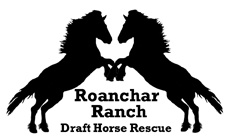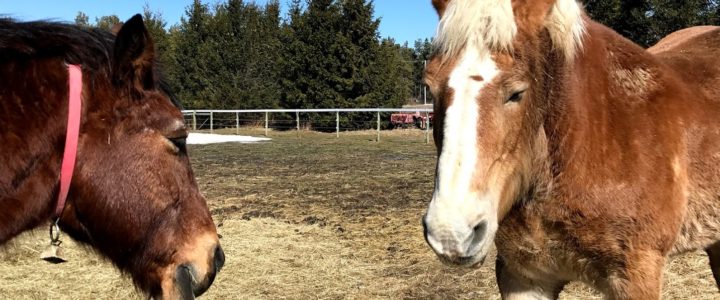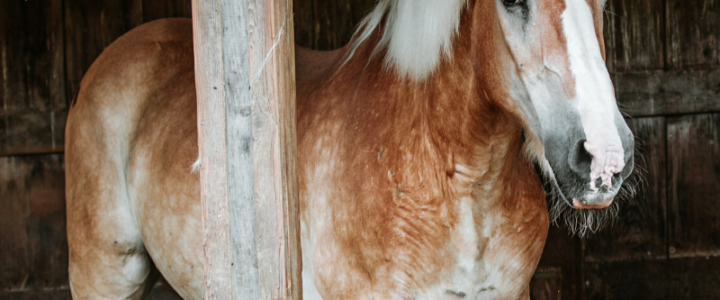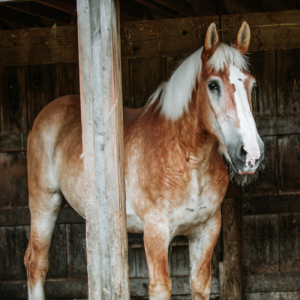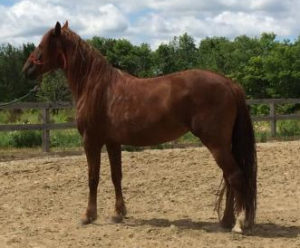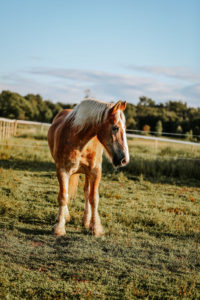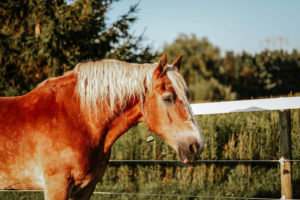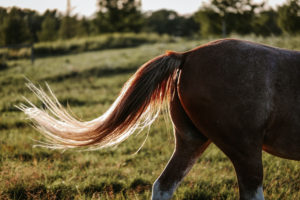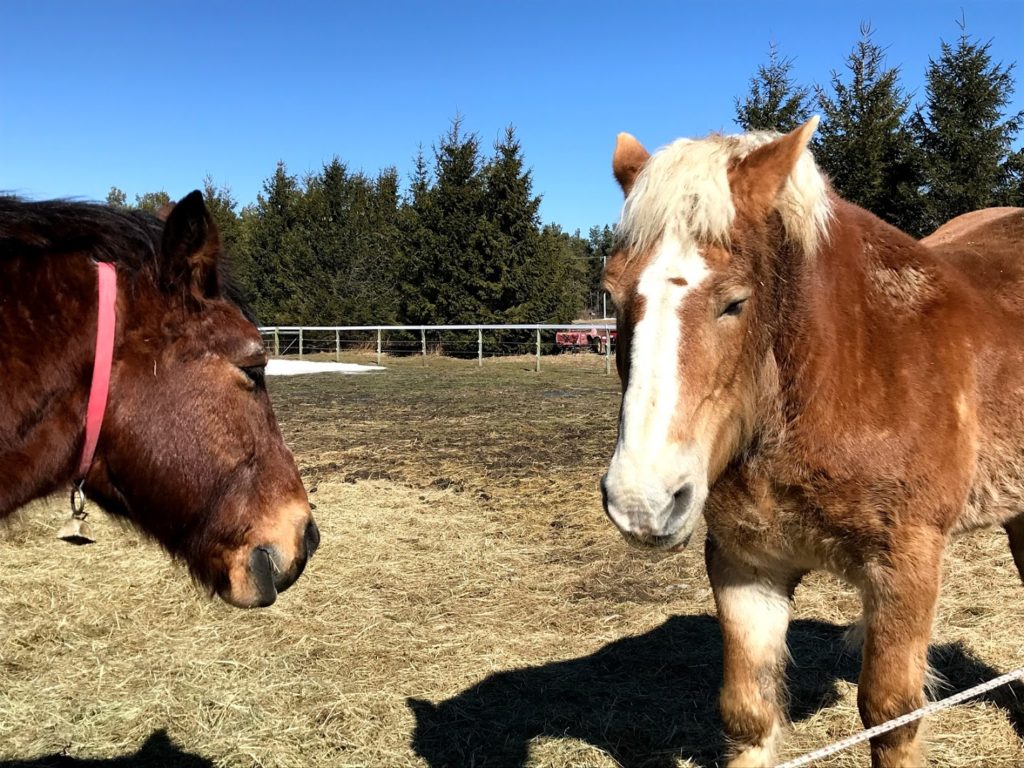
Have you ever wondered how two visually impaired horses communicate? Is it really that different than how horses usually communicate? (read more about that below) Yes and no.
Just like sighted horses, Gabby and Barney have a language all their own! With a simple ring of a bell, Gabby can tell Barney everything from “move away” to “there is food over here.”
How does she do it? By projecting her intentions and by Barney deciphering them. For example, Barney knows to move away when Gabby swings her head to touch her nose to her side. The energy that she uses to swing her head is palpable.
However, when Gabby gently touches Barney’s side, he understands to move off the pressure to get to food. Gabby uses hardly any force and almost looks like she is going in slow motion. Barney isn’t scared because Gabby projects very little energy.
The inherit ability of horses to read intentions is why they are used for therapy. Horses are able to understand what a person is thinking and needs, in some cases, more so than another human. The results are nothing short of amazing.
Don’t miss out on the latest news from the ranch! Sign up for our monthly newsletter today.
